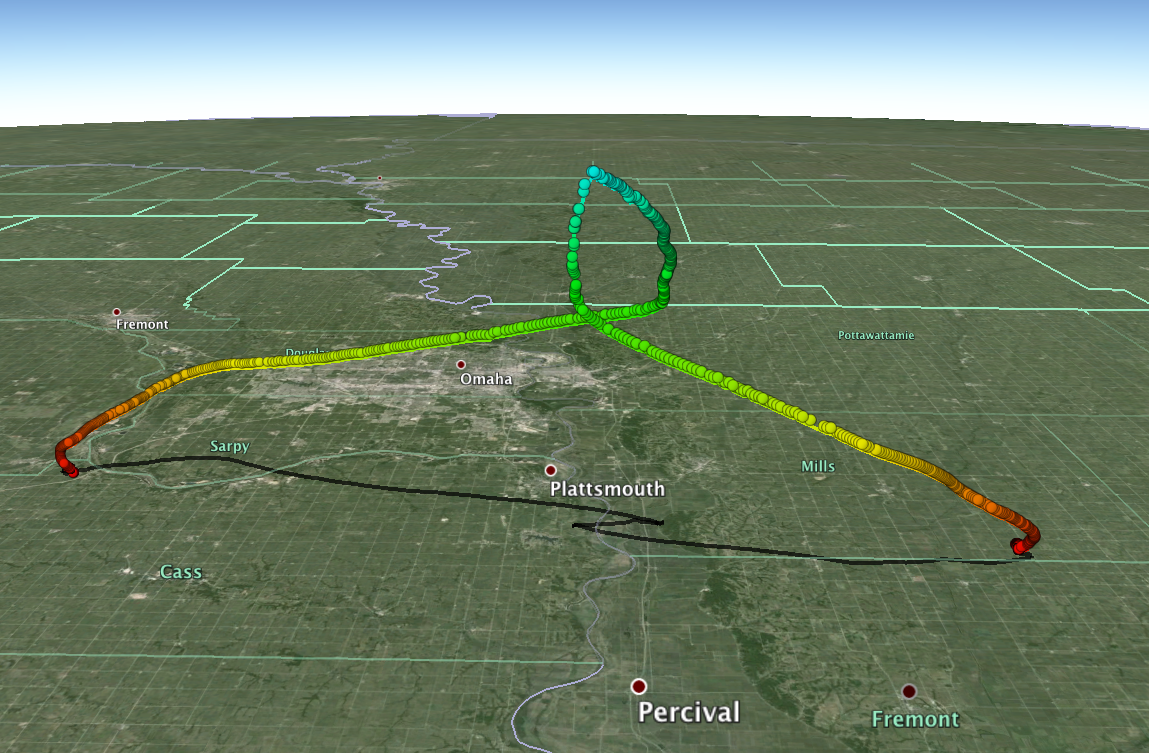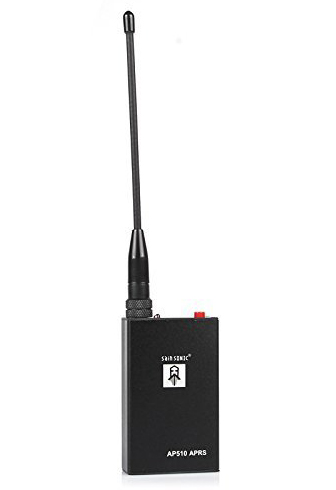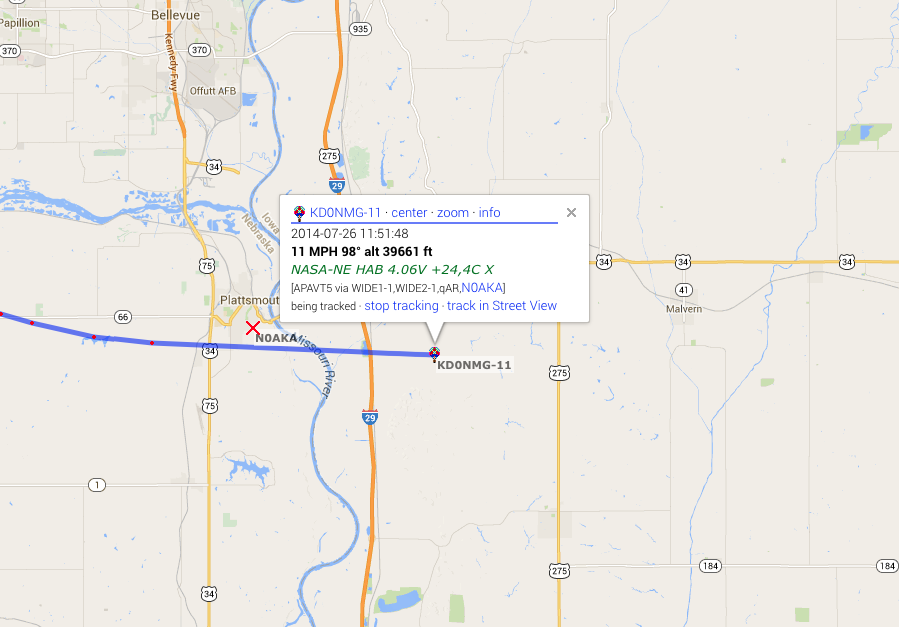If you have yet to read the story and see the pictures from this flight, please click this link. Here are some screen shots taken from viewing Google Earth file of the flight. You can see the shadow of the path of the balloon projected onto the ground. If you want to view the original .kml file on Google Earth, click here to download.
This is a close-up of the end of the flight, where it landed, and the path of the recovery team back to the chase vehicles parked on the gravel road.
The highest altitude recorded for this flight was 79462 ft. The balloon was launched at 11:05 am, burst at 12:07 pm, and landed at 12:45 pm.
The first experiment contained two hand warmers with temperature sensors in an active hand warmer and an inactive (used) one. Both warmers were enclosed in the same styrofoam pod, but on opposite sides. Because the hand warmers are used by many high-altitude ballooners to keep sensitive electronics from getting too cold. However, because it requires oxygen for the exothermic chemical reaction, we were uncertain how consistent the temperature would be over the length of the flight and with the near vacuum of near space. The red data points are from the active hand warmer and the blue data points are from the inactive one. The active warmer maintained a consistent 67 degrees C until the launch when it slowly decreased the temperature as it ascended. The coolest temperature was attained after the burst as it was falling at about 11 degrees C. This was likely because of a combination of less oxygen for the chemical reaction and the cooler temperatures at altitude. The inactive warmer mimics the active one, but is slightly cooler. This is probably from the active hand-warmer heating up the inside of the pod. This test showed that the warmers seem to be effective but more from the initial heating than continual heating at altitude. Additional tests may be done with a control hand warmer on the ground to see how the temperature profile changes over time and additional tests done in a vacuum chamber in the lab.
Another experiment sought to find the answer to the burning question, “Does candy (M&Ms) exposed to conditions in near space taste different than candy left at the launch site?” Both the experiment candy and the control candy were quickly consumed during the parking lot debriefing and copious notes and comparisons as to the findings were not taken. We may seek additional funding to continue to search for the answer to this delicious question.
The marshmallow experiment used a camera within the pod to watch how marshmallows changed over the course of a flight. The balloon made it to approximately 80,000 feet so the expansion was fairly subtle on the ascent, however, the compression on the way down was faster and nicely visible. This video from inside the pod is sped up x125. The apparent flickering is the caused by the changes in the light as the pod spins upon descent.
The final experiment was to test a new APRS module. The SainSonic AP510 was a small inexpensive APRS unit found on Amazon. Its size and low-cost made it very attractive, but unfortunately, our experiment confirmed our suspicion that its GPS capability was “locked” above the 40K foot mark. It worked on aprs.fi to a height of 39,661 ft. Also, since the unit did not communicate once back below the 40K point back down to the ground, the battery may not have been able to last long enough and (or) was susceptible to the low temperatures at near space. If we decided to further test the unit, we would have tested different antennas to find an optimum style and length. Our experiment makes this a moot point, and we will probably no longer use this system.
We would like to thank everyone that took part in our Near Space Adventure. You all did a fantastic job!





One thought on “Data from Near Space Adventure – 7/26/14”